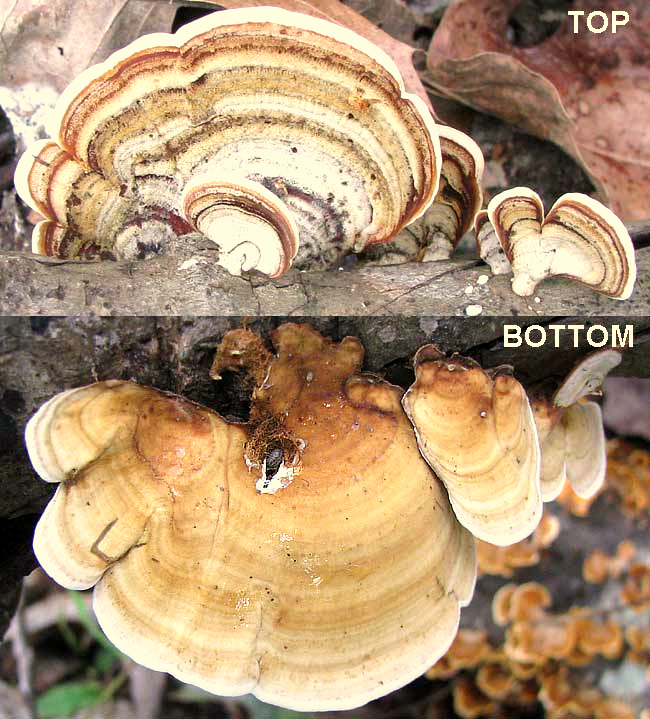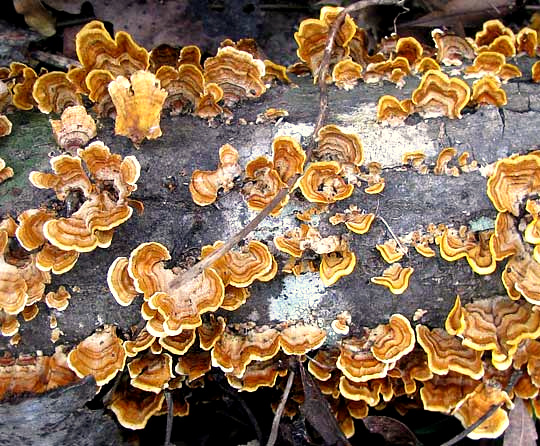Excerpts from Jim Conrad's
Naturalist Newsletter

from the October 18, 2009 Newsletter, from near Natchez, Mississippi
'FALSE" TURKEY TAILS
Two fairly unrelated but similar fungi are among the most commonly encountered and possibly the best known of all North American fungi. They are both "turkey tails," and the one so abundant around here is seen above.
Another shot, showing how large numbers of them can crowd together on a log is below:

In the picture notice that the fungus's top view is shown above while the bottom half of the picture shows the bottom view of the same organisms. The larger "tail" is about two inches (5 cm) across.
The two turkey-tail species seen only from above can be hard to distinguish. However, when you compare their bottom surfaces you see that they're completely different kinds of fungi. The bottom surface of one species is conspicuously honeycombed with minute holes or pores, while the bottom of the other is smooth. By convention, the one with the holes is the "True Turkey Tail" while the smooth-surfaced one is the "False Turkey Tail." You can see that ours is smooth- surfaced, so it's the "False." It's STEREUM OSTREA.
Our "False" is a kind of "crust fungus," a member of the fungus order Russulales. In contrast, the "True," Trametes versicolor, is a "polypore fungus," a member of the fungus order Polyporales. To get a fix on how distantly related the two fungi are, remember that among birds we have the Penguin Order and the Hummingbird Order. So, being in different orders as are the "True" and "False" Turkeytails implies profound differences.
Where I grew up in Kentucky, the "True" Turkey Tail was the overwhelmingly most common species, while in southwestern Mississippi the "False" is by far the most common. Curiously, not only are the two species almost identical when seen from above, but also both are "saprobic" on dead hardwoods, which means that they take nutrients from dead wood. Both cause a white rot of the heartwood or sapwood.
It's unfortunate that our species is known as "false," for it's just as true as the other. I think it's the old story of early field guides in the US having been produced mostly by Northeastern naturalists. "True" Turkey Tails were most common up there, so when they discovered our species it was "false" according to their mind-sets. I call ours just plain "Turkey Tail" except when talking with anyone who really might be interested in fungus phylogeny.